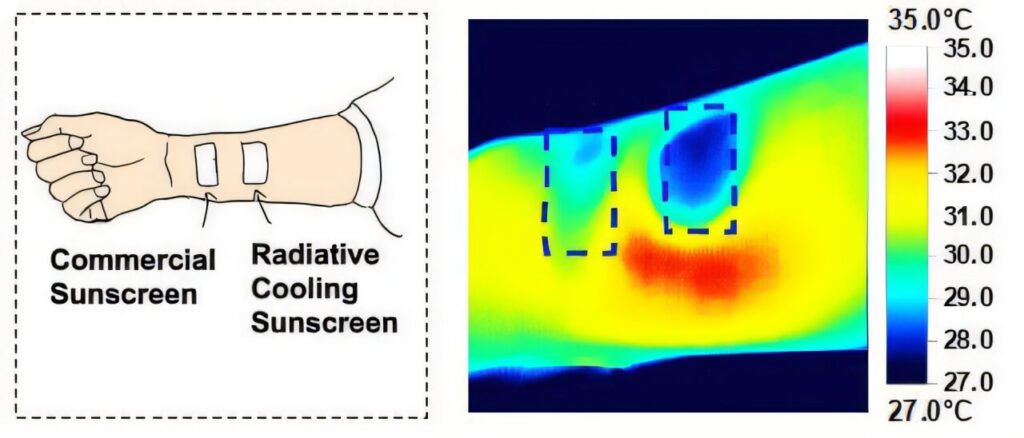Wearing sunscreen is important to protect your skin from the harmful effects of UV radiation but doesn’t cool people off. However, a new formula, described in Nano Letters, protects against both UV light and heat from the sun using radiative cooling. The prototype sunblock kept human skin up to 11 degrees Fahrenheit (6 degrees Celsius) cooler than bare skin, or around 6 °F (3 °C) cooler than existing sunscreens.
Radiative cooling involves either reflecting or radiating heat away from something, cooling whatever’s underneath. It is already used to create cooling fabrics and coatings that could both cool and heat homes, among other applications.
Some passive radiative cooling technologies rely on an ingredient called titanium dioxide (TiO2) because the whitish substance reflects heat. TiO2 particles are also used in mineral sunscreens to reflect UV light, but the particles aren’t the right size to produce a cooling effect. So, Rufan Zhang and colleagues wanted to tune the size of TiO2 nanoparticles to create a sunscreen that works both as a UV protector and a radiative cooler.
The team created their sunblock by combining six ingredients: TiO2 nanoparticles, water, ethanol, moisturizing cream, pigments, and a common silicone polymer used in cosmetics called polydimethylsiloxane. By carefully adjusting the sizes of the TiO2 nanoparticles, they produced a material that reflects both UV light and solar heat, imparting the cooling ability.
The new formulation demonstrated an SPF of about 50, water resistance and continued efficacy after 12 hours of simulated sunlight exposure with a xenon lamp. Additionally, when applied to both animal and human skin, the product didn’t cause irritation.
In tests on people in a hot and humid outdoor environment, the new radiative cooling sunscreen was found to keep the participants’ skin up to 10.8 °F (6.0 °C) cooler than bare skin, and up to 11.0 °F (6.1 °C) cooler than commercially available sunscreens. The formulation is inexpensive, costing only $0.92 for 10 grams of the mixture—on par with sunblocks already on the market. The researchers say their sunscreen prototype exhibits promising commercial potential, especially as temperatures in the summer continue to rise.


